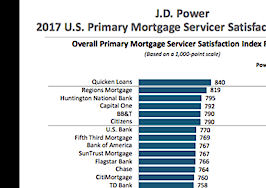Ever since Ugh married Meg and they could barely afford their first cave, there have been co-signers named Mom and Pop making mortgages possible.
But co-signers can come in many forms. Another relative, friend, employer, roommate, significant other or even an investor can agree to be on a mortgage that someone can’t qualify for on his or her own.
Nowadays, slightly more than one in every five houses purchased with financing in the first quarter — 22 percent — involved co-borrowers, according to Attom Data Solutions. That’s up from 20 percent for the same period last year and in 2015, when the real estate information company first began tracking the phenomenon.
The incidence of co-borrowers is even higher in 11 of the country’s largest cities. In Miami, a whopping four out of every 10 single-family dwellings purchased in January, February and March were bought with an unmarried co-borrower. In Seattle, the share of co-borrower purchases was 37 percent; in San Diego and Los Angeles, 28 percent.
The main reason homebuyers need co-borrowers is because they can’t qualify to purchase the house they want, says Attom Chief Economist Daren Bloomquist, who co-signed for his wife’s sister and her husband so they could afford to buy in pricey Southern California.
Housing prices are so expensive in some locations that without help, many buyers might be relegated to the rental market forever.
And some buyers don’t have the credit scores, credit histories or the debt-to-income ratios to buy, even at a reasonable price. On top of that, many buyers are looking at houses beyond their means.
Blomquist is seeing a rise in companies offering to help young buyers in exchange for a piece of the action in the form of shared appreciation. Outfits such as unison.com “are institutionalizing the idea of co-borrowing and shared equity,” he explained.
All of this begs the question: How should you approach a co-borrowing situation, both as a buyer and as a co-signer?
When co-borrowing gets complicated
The most important consideration isn’t getting into a co-borrowing deal, but how all parties plan to get out of it.
While clear heads prevail — when both sides are excited about the deal and there have been no disagreements yet — you should sit down together and decide how and when it will end.
It might make sense for the agreement to last long enough for the buyer to build up credit, income and cash reserves to eventually buy out the co-signer. But what if interest rates rise, and it’s unwise for the buyer to seek a new loan? In that scenario, the deal might include some kind of buffer, either a period of time or a certain mortgage rate.
The main point to parse is what share of the profits the co-borrower will be entitled to, if there are, indeed, any profits to split. A relative may not want anything in return — thanks, Mom and Dad! — but a less partial signer might want a healthy chunk.
It’s easy to identify profit if a buyer agrees to sell and move on. But if there is no sale, the parties will need to know the home’s value at the time the deal is to be dissolved.
An appraisal, the cost of which should be borne equally, is in order in this case. But if one side or the other disagrees with the valuation, it might be a good idea for each party to pay for their own appraisal. If there is any difference between the two, one option could be to split the difference down the middle.
The parties should also have a plan for if the value of the property goes down: Will the co-signer share in the loss, and to what extent?
Another aspect of the deal that people tend to forget is improvements made to the property during the co-owner period. Usually, the buyer foots the bill for things such as landscaping and an addition. But will he or she have to share in the value these and other features that add to the home’s worth?
Co-signers on the mortgage are not on the title and have no ownership interest in the place. Yet their own debt-to-income ratio could take a hit because they have incurred debt by co-signing. Consequently, their ability to obtain their own mortgage, home equity loan or even a credit card could be limited.
Remember, too, that if a buyer doesn’t make the house payments as promised, the lender will come to the co-signer, who will be responsible not just for the payments but also late fees and, if it comes to that, collection fees and lawyer’s fees. Late payments are likely to take a heavy toll, as is a co-signer’s personal relationship with the buyer.
To protect themselves and keep tabs on “tardy alerts,” co-borrowers should insist that both they and the buyer be billed separately by the mortgage company.
Lew Sichelman’s weekly column, “The Housing Scene,” is syndicated to newspapers throughout the country.












